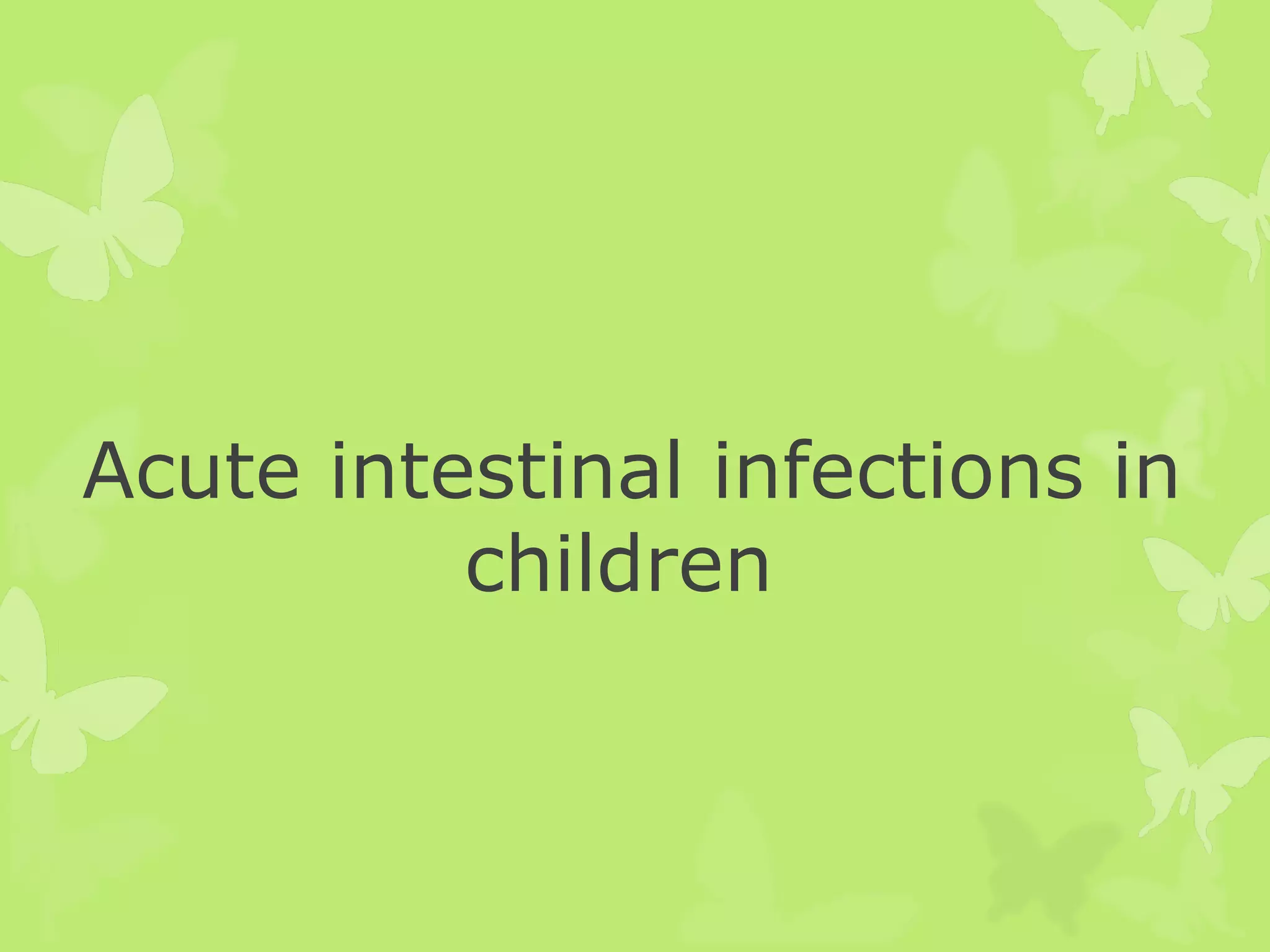This document discusses acute intestinal infections in children. It describes the most common bacterial and viral causes, including Salmonella, Shigella, E. coli, rotavirus and enterovirus. It then focuses on two specific infections - Shigellosis and Salmonellosis. For Shigellosis, it covers the etiology, epidemiology, pathogenesis, clinical manifestations including symptoms for different severities, classifications of clinical forms, and potential complications. For Salmonellosis, it similarly discusses the etiology, epidemiology, pathogenesis and clinical manifestations such as different clinical forms including the most common gastrointestinal form.



























































